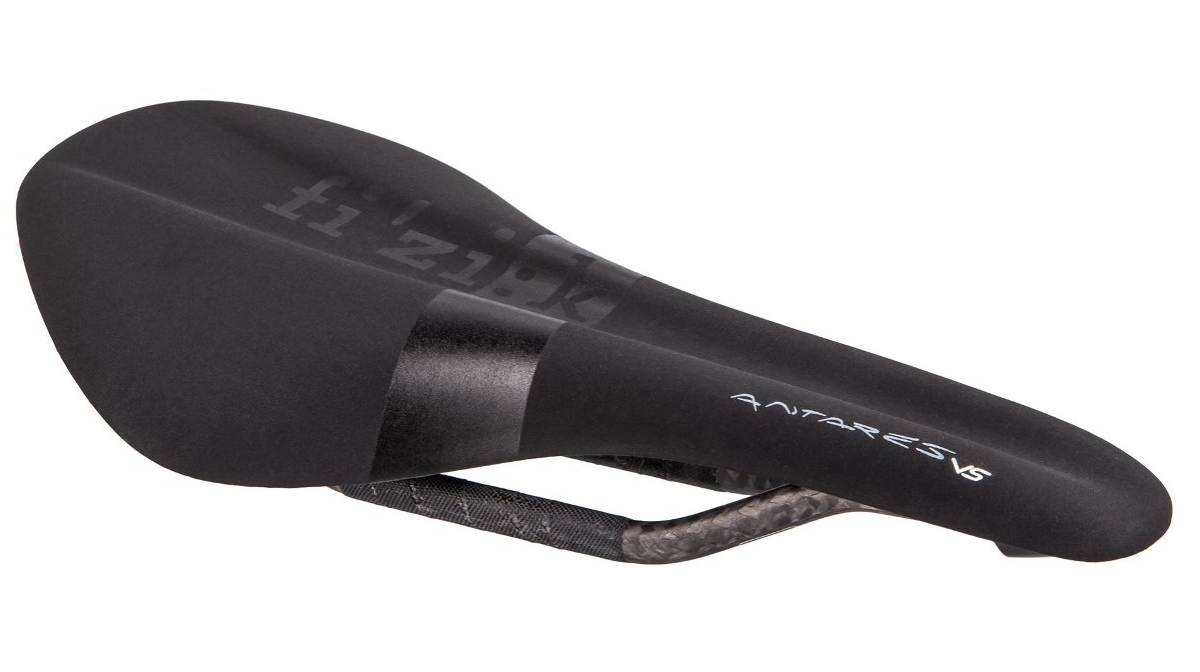At ProBikeKit we try to ride the kit we sell as much as possible to help you make an informed purchase. I’ve been riding a Fizik Antares Versus saddle for the last month, so I thought it a good opportunity to give some first impressions.
Now I should mention that I’ve ridden Fizik saddles before and generally liked them, despite taking a little bit of breaking in initially, I’ve usually found their saddle profiles to suit me and the longer nose comfortable. When the opportunity to ride the new Versus version of the popular Antares came along I jumped at the chance. The Versus range of the popular classic Fizik’s (Arione, Antares and Aliante) feature the same tried and tested Fizik designs, but with a central relief channel. This channel relieves pressure on the perineal area, helping to prevent numb spots and generally make riding a bit more pleasant. I’ll talk more about this later, but first let’s take a quick look at how to choose your Fizik saddle.
Fizik use something called Spine Concept to determine which saddle you should ride. The basic idea is that depending on the flexibility of your spine you’ll fall into one of three categories; snake, chameleon or bull. The Snake is the most flexible, and the bull the least. Fizik recommend snakes ride the Arione (Ivan Basso, Thor Hushovd), chameleons ride the Antares (Carlos Sastre, Dave Zabriskie) and bulls ride the Aliante. According to the Spine concept, I fall in to the chameleon category; when I’m fit and stretching regularly I can touch my toes comfortably but I am not a naturally flexible chap.
Although it sounded pretty odd at first, the idea that your flexibility would affect your position on the bike and therefore also affect your saddle design makes a lot of sense to me. As a sort of test, I’ve had my seat bones measured on one of those clever stools which use corrugated cardboard and interestingly the Antares, which the Fizik Spine Concept recommends for me, is exactly the right width according to my seat bone width.
I’ve done a few hundred miles on the Antares so far and to date, I can report it’s been extremely comfortable. There’s some initial firmness, as you’d expect from a new saddle, but the shape, width and profile feel bang on – it seems Fizik’s Spine Concept may be on the money. The relief channel is a bit of a revelation for me, I’ve had no numbness since I started using it, even on long climbs and it doesn’t feel like you are perched either side of it which is pleasing. There’s a degree of give to the saddle, but it is on the firm side and I expect it will take a few more long days to bed in the padding. Thigh clearance is excellent and the flexible nose is nice when you hit something really steep and need to shuffle forwards.
One thing I would mention is that it’s worth checking the height of your Fizik saddle compared to your old one. I found that I had to lower the seat post a couple of mm’s to be at the same height. One of the nice things about Fizik saddles is the range of fore-aft adjustment they offer and with over 85mm of adjustment, there’s no shortage of options so you can get it positioned spot on. You can also attach a Saddle Bag or a Rear Light using the clever ICS attachment system which all Fizik saddles have – just clip it in and ride.
So first impressions are very favourable, I’ll report back in a few months once I’ve got some more miles and big days in, in the meantime, I’d be interested to hear what you think. Have you ridden any of the Fizik Versus range? What has your experience of the Fizik Spine Concept been like?
In the meantime, if you’ve got questions about saddles why not check out our Saddle Focus blog, it takes a general look at those all important perches.

